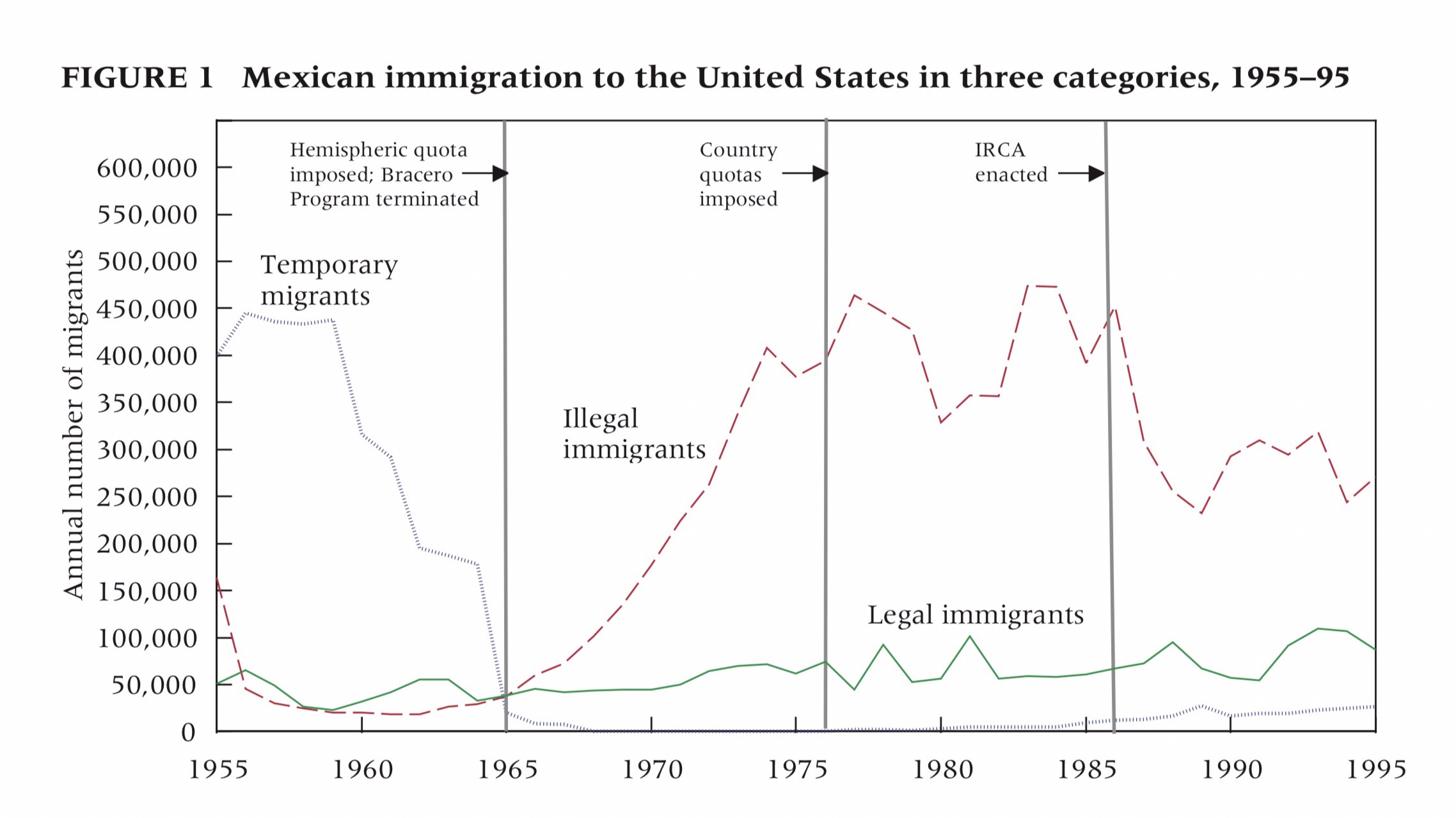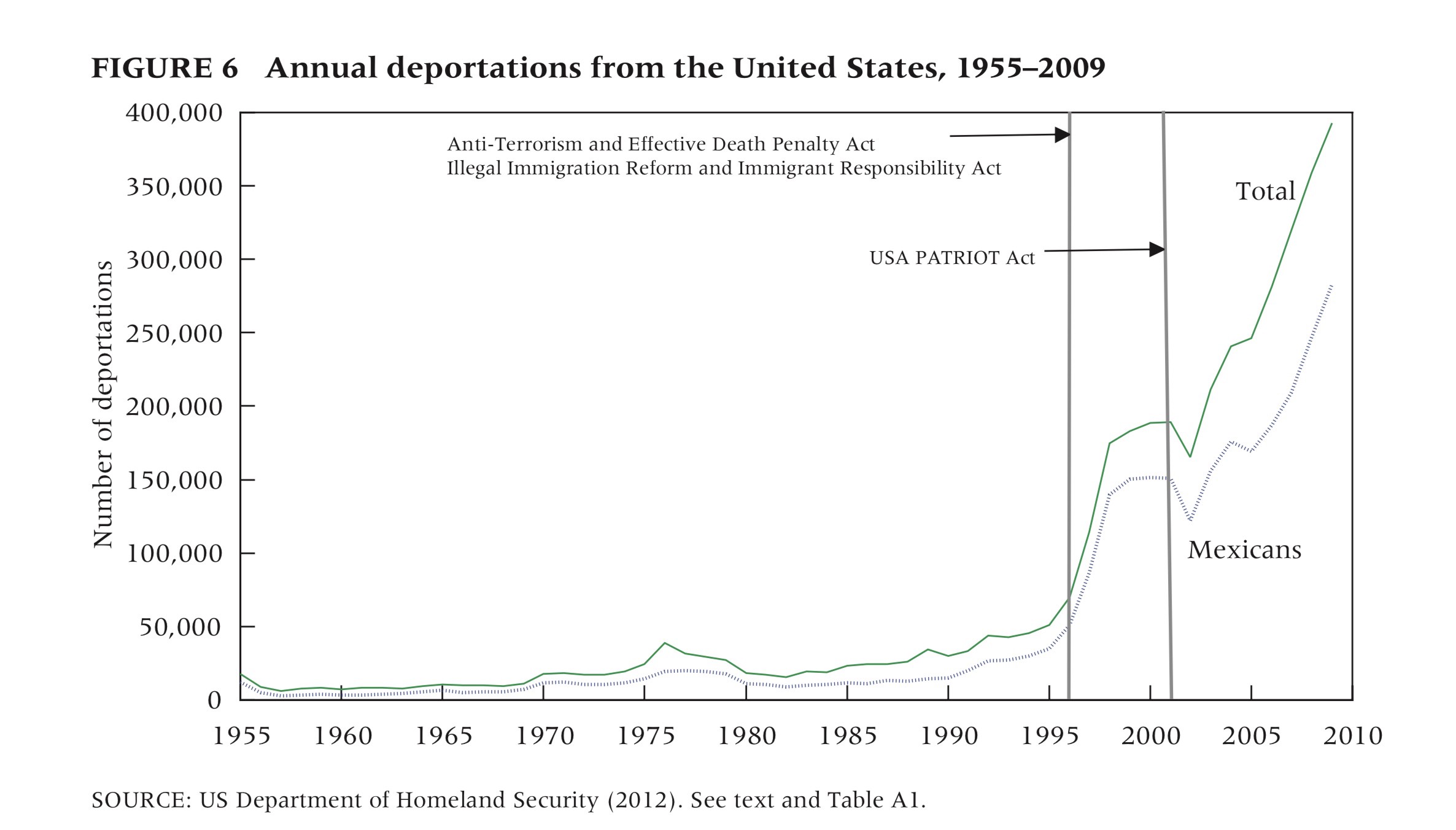Did you know?
Interesting fact sheet from the Dallas Branch of the Federal Reserve Bank system.
All material below this point is directly quoted from the .pdf fact sheet; it is here in text format to aid in indexing, and quoting.

An Economic Overview
As U.S. immigration reform moves forward in 2013, a variety of facts and figures continue to be presented around immigrants and their current and potential contributions to the U.S. economy. This fact sheet—the first in our series on immigrants and the economy—provides key data points on why immigrants are vital to the U.S. economy and why comprehensive immigration reform is necessary for future U.S. competitiveness.
Five Reasons
Why the U.S. Economy Needs Immigrants
FACTS
1. Immigrants are more likely to be entrepreneurial and to start new businesses, which, in turn, create jobs for U.S.-born workers.
- Immigrants started 28 percent of all new U.S. businesses in 2011, employing 1 in 10 U.S. workers. 1
- Immigrants represent 18 percent of small business owners in the U.S.—exceeding their share of the overall population (13 percent)—and are more likely than those born in the U.S. to start a small business. Immigrant-owned small businesses employed an estimated 4.7 million people and generated an estimated $776 billion in receipts in 2007. More small business owners are from Mexico than any other country.2
- Over the past two decades, immigrants made up 30 percent of the growth in small business creation.3
- Immigrants founded 18 percent of 2010 Fortune 500 companies, creating jobs for 3.6 million people. When including immigrants and their children, the number of Fortune 500 companies with immigrant roots jumps to 40 percent, employing more than 10 million people.4
2. Both high-skilled and low-skilled immigrant labor creates additional jobs across the U.S. economy. 
- With immigration reform, newly authorized immigrant workers would produce enough new consumer spending to support 750,000 to 900,000 jobs.5
- Every additional foreign-born student who graduates in science, technology, engineering, or mathematics (STEM) and remains in the U.S. creates an estimated 2.62 American jobs.
- Every low-skilled, non-agricultural, temporary worker who comes to the U.S. to fill a job that may otherwise be left open creates an average of 4.64 U.S. jobs. 6 These low-skilled jobs are the necessary backbone to support higher-skilled positions.
- Passage of the DREAM Act would add $329 billion to the U.S. economy and create 1.4 million new jobs by 2030.7
3. Immigrants boost tax revenue, enlarge the taxpayer base and help to keep down the price of goods. 
- On average, immigrants, including the undocumented, pay nearly $1,800 more in taxes than they receive in benefits.8
- Households headed by undocumented immigrants paid $11.2 billion in state and local taxes in 2010. That included $1.2 billion in personal income taxes, $1.6 billion in property taxes and $8.4 billion in sales taxes.9
- Immigrants lower the price of products used by highly educated consumers by 0.4 percent of GDP and for less-educated consumers by 0.3 percent.10
4. As baby boomers retire, immigrants will increasingly be critical for continued economic growth and for ensuring a steady flow of new workers. 
- Without immigrants, the U.S. will not have enough new workers to support retirees. Seventy years ago, there were 150 workers for every 20 seniors; 10 years ago, there were 100 workers per 20 seniors. By 2050, there will be only 56 workers for every 20 seniors. The U.S. needs new taxpayers to help fund Social Security and Medicare and new workers to fill retirees’ positions and provide health care services.11
- Current levels of immigration will temper the aging of the U.S. population over the next two decades, slowing the increase in the old-age dependency ratio by more than one-quarter.12
- Nearly 65 percent of Latino immigrants in California who stayed more than 30 years are homeowners, making them a critical pool to buy homes as baby boomers downsize.13
5. The majority of immigrants in the U.S. today are from Latin America, representing a huge potential economic opportunity due to the region’s burgeoning economic standing.
- Immigrants are a vital link with their home countries and offer new prospects for the U.S. to capitalize on Latin America’s economic expansion, which saw 3 percent growth in 2012—double the 1.5 percent growth in the United States. In addition, 11 of the 20 U.S. free-trade agreements in force are with Latin American countries. Immigrant-owned small businesses have a unique opportunity to connect to the global marketplace.
- Over 7 percent of immigrant firms export their goods and services, whereas just over 4 percent of non-immigrant firms export.14
- Mexico boasts the second largest economy in Latin America and grew at a rate of 4.0 percent in 2012, with a projected 3.5 percent growth in 2013.15 With 29 percent of all immigrants and 58 percent of undocumented immigrants coming from Mexico,16 this demographic represents a human gateway to one of Latin America’s fastest-growing economies.
This fact sheet is a product of the AS/COA Hispanic Integration and Immigration Initiative, which advances the integration of immigrants and promotes positive dialogue around the economic contributions of immigrants and Latinos overall across the United States. It was produced by Jason Marczak, AS/COA Director of Policy, in collaboration with Leani García. For more information, visit AS/COA Online at: http://www.as-coa.org. For media inquiries or to speak with an expert on this topic, please contact Adriana LaRotta in our communications office at: alarotta@as-coa.org
Population: The 40 million immigrants in the U.S. today—of which 29 percent are from Mexico— represent 13 percent of the U.S. population.
In addition, the 53 million Latinos in the U.S. account for about 17 percent of the population and 10 percent of voters in the 2012 election.
However, the demographics of new immigrants have changed in recent years, with Asians having overtaken Latinos as the largest group of new immigrants.
Did you know?
Google, Procter & Gamble, Kraft, Colgate Palmolive, Pfizer, and eBay are among companies with immigrant founders.
Did you know?
Hispanic immigrants help revitalize communities across the U.S., including Ottumwa, Iowa, a 30,000-person city southeast of Des Moines, which, according to The Wall Street Journal, saw its taxable property value double in the last 10 years after making a concerted push to bring in new immigrants who opened up shops to replace shuttered storefronts.
Endnotes
1. Robert H. Fairlie, “Open for Business: How Immigrants are Driving Small Business Creation in the United States,” Partnership for a New American Economy, August 2011. http://www.renewoureconomy.org/sites/all/themes/pnae/openforbusiness.pdf
2. Fiscal Policy Institute, “Immigrant Small Business Owners: A Significant and Growing Part of the Economy,” June 2012. http://fiscalpolicy.org/immigrant-small-business-owners-FPI-20120614.pdf
3. Ibid.
4. Partnership for a New American Economy, “The ‘New American’ Fortune 500,” June 2011. http://www.renewoureconomy.org/sites/all/themes/pnae/img/new-american-fortune-500-june-2011.pdf
5. Raúl Hinojosa-Ojeda, “Raising the Floor for American Workers: The Economic Benefits of Comprehensive Immigration Reform,” Center for American Progress, January 2010.
6. Madeline Zavodny, “Immigration and American Jobs,” American Enterprise Institute for Public Policy Research and the Partnership for a New American Economy, December 2011. http://www.renewoureconomy.org/sites/all/themes/pnae/img/NAE_Im-AmerJobs.pdf
7. Juan Carlos Guzmán and Raúl C. Jara, “The Economic Benefits of Passing the Dream Act,” Center for American Progress and Partnership for a New American Economy, October 2012. http://www.americanprogress.org/issues/immigration/report/2012/09/30/39567/the-economic-benefits-of-passing-the-dream-act/
8. James P. Smith & Barry Edmonston, eds., The New Americans: Economic, Demographic, and Fiscal Effects of Immigration (Washington, DC: National Research Council, National Academy of Sciences Press, 1997), 220, 353.
9. Immigration Policy Center, “Unauthorized Immigrants Pay Taxes, Too,” April 2011. http://www.immigrationpolicy.org/just-facts/unauthorized-immigrants-pay-taxes-too
10. Patricia Cortes, “The Effect of Low-Skilled Immigration on US Prices: Evidence from CPI Data,” 381-422.
11. Immigration Policy Center, “The Future of a Generation: How New Americans Will Help Suppport Retiring Baby Boomers,” February 2012. http://www.immigrationpolicy.org/just-facts/future-generation-how-new-americans-will-help-support-retiring-baby-boomers
12. Ibid.
13. Dowell Myers, Immigrants and Boomers: Forging a New Social Contract for America (New York: Russell Sage Foundation, 2007).
14. Robert H. Fairlie, “Immigrant Entrepreneurs and Small Business Owners, and their Access to Financial Capital,” Small Business Administration, May 2012.
15. The World Bank, “Mexico Overview,” 2013. http://www.worldbank.org/en/country/mexico/overview
16. Pew Hispanic Center, “A Nation of Immigrants: A Portrait of the 40 Million, Including 11 Million Unauthorized,” January 2013. http://www.pewhispanic.org/files/2013/01/statistical_portrait_final_jan_29.pdf
More:
Spread the word; friends don't allow friends to repeat history.




 Posted by Ed Darrell
Posted by Ed Darrell 






























